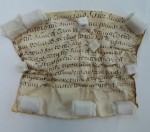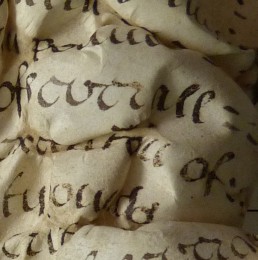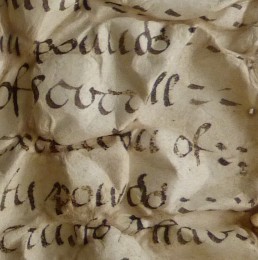Treatment trials continued…
Next » « Previous19th-century, artificially damaged parchment
A large manuscript, parchment document (not part of the LMA collections) was cut down into 16 small rectangles (180 x 140mm), which were then folded and sewn together to make a replica book. Successful shrinking was achieved through baking the book in a conventional oven and introducing moisture at regular intervals. The temperature was 200°C, and the book was left in the oven for 20 minutes with mill board clamped around it, then for another 10 with no mill board. The best shrinking was achieved by spraying the pages with water whilst it was in the oven.
The book was dis-bound and six folios chosen which seemed to have damage similar to that seen on the Great Parchment Book. Local humidification and full humidification combined with peg drying, suction drying and magnet drying was tested on the sheets. The results for those that were fully humidified can be seen below.
Results – magnets
This method was very successful, in terms of reducing the planar distortions. The only concern was that it might damage flaky media, and so an extra barrier, between the magnets and parchment might be needed. This method would be very good for badly torn sheets with areas too fragile to withstand having a clip or peg attached.





